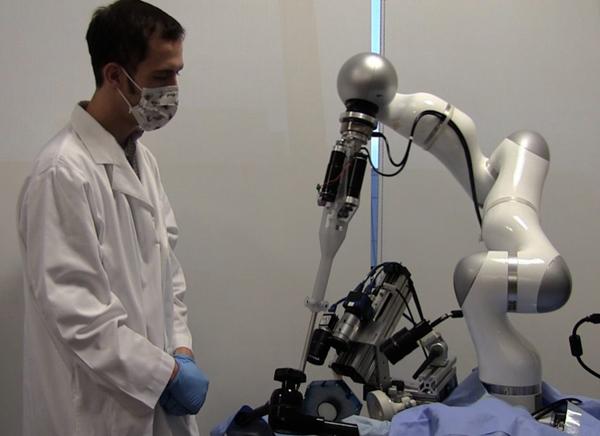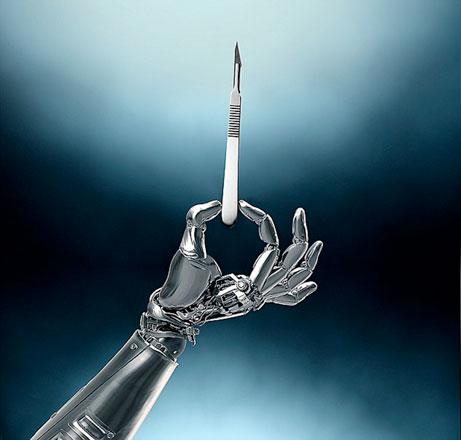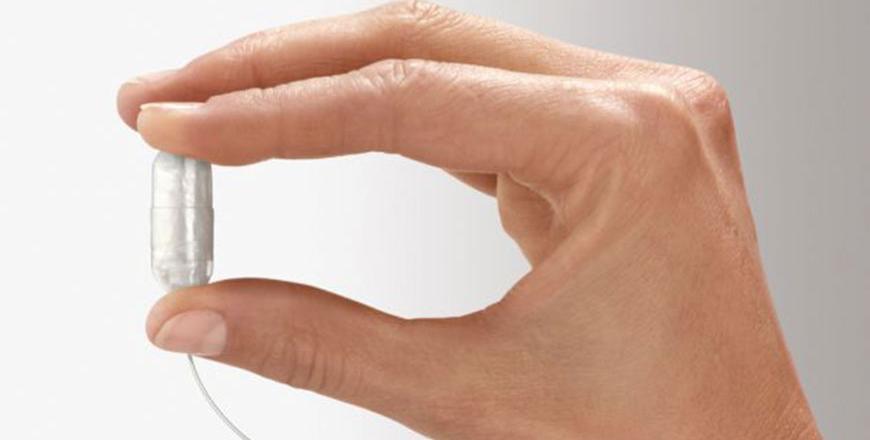You are here
Dr Robot scrubs in, and suturing may never be the same
By Los Angeles Times (TNS) - May 07,2016 - Last updated at May 07,2016

Photo courtesy of Children’s National Medical Centre
Surgery, a profession filled with great hands, quick minds and big egos, may have a new star in its midst.
The Smart Tissue Autonomous Robot — STAR — is a melding of off-the-shelf robotic hardware, time-worn sensor technology and improvised software, and it has none of the attributes that make surgeons the hard-charging stars of their profession. But a new study suggests it could become the workhorse of the OR anyway, nudging aside some human surgeons well before the patient’s incision is closed.
In a series of trial runs, the new robotic system sutured incisions with deft, even strokes that surpassed those of experienced surgeons and an existing robotic system. Without any human oversight, the STAR system manipulated tissue that can stretch, twist and retract unpredictably, and sewed it up well enough to withstand a surge of hydraulic pressure from within. And by all accounts, it never complained about its hours or pay.
In fact, said the authors of a new study, the STAR system has the potential to speed some of surgery’s most time-consuming work, doing it with fewer mistakes and potentially reducing costly and dangerous surgical complications. It could not only make surgery safer, but reduce its cost, said the developers of surgery’s newest trainee.
To be sure, that is a claim that has been made for existing robotic surgical systems, which can cost more than $1 million to purchase and $100,000 to maintain. But while not all have lived up to such promises, none have been designed to work so independently of surgeons before.
When it comes to the laborious task of suturing together the sliced ends of the small intestine — a task akin to stitching together two slippery ends of a garden hose submerged in muddy water — “it does it consistently, it does it perfectly all the time, regardless of where you are”, said the study’s lead author Dr Peter Kim, associate surgeon-in-chief at Children’s National Health System in Washington.
In a report published Wednesday in the journal Science Translational Medicine, researchers at Johns Hopkins University acknowledged that in these early trials, which used pigs’ intestines, the STAR system performed its task more slowly than an experienced surgeon typically would. But in practice, they said, that will change.
“We can run the robot really, really fast,” said study co-author Ryan Decker, a senior engineer in the Children’s National Health System’s Shiekh Zayed Institute for Paediatric Surgical Intervention. “But in this study, we really focused on… the outcomes, so we didn’t run it as fast as we could.”
The developers of the STAR system said it could be ready for use in ORs in two to three years if they can find commercial partners capable of shepherding the technology through the Food and Drug Administration (FDA) and onto the surgical market. That path would be eased, they said, by the fact that some version of virtually all the system’s component technologies are already in broad medical use, and have, therefore, come before the FDA before.
The use of robotics as an aid to surgeons got its start in 1985, when a robot called the Puma 560 was used to sink a needle into a brain to perform a biopsy. Despite concerns about the high cost of robotic surgical aids and their uneven record of improving patients’ outcomes, their use has exploded in recent years. Robotic surgical systems such as the da Vinci are now widely used to perform colorectal, abdominal and gynaecological surgeries and to remove cancerous prostate glands.
In a key respect, though, the STAR system represents a significant step beyond existing surgical robots.
“In current robotic surgery, it’s basically still a surgeon doing an operation: He’s just using what we call a robot,” said Dr Jason D. Wright, chief of gynaecologic oncology at Columbia University’s College of Physicians and Surgeons. Under a surgeon’s direct gaze, and often mimicking the movement of a surgeon’s hands, current robotic surgical systems perform a range of surgical tasks.
“It’s like a surgical assistant,” said Wright, who was not involved with the newly published research.
By contrast, said Wright, “this is actually an autonomously functioning robotic surgery… that’s quite a different system”.
As described by the paper’s authors, “inspired by the best human surgical practices, a computer programme generates a plan to complete complex surgical tasks on deformable soft tissue”. Then — given a surgeon’s go-ahead — the STAR system carries out that plan using an autonomous suturing algorithm and sensors that include night-vision and infrared sensing technology.
“The mode we’re operating under is supervised autonomy,” said co-author Axel Krieger of Hopkins’ paediatric surgical innovation programme. “The surgeon is overseeing and has the opportunity at any time to stop the robot and take over.” At a moment when tissue is being pierced or a delicate transition is imminent, he said, “I’m sure they wouldn’t be comfortable going off and taking a coffee break.”
But for painstaking and error-prone processes such as suturing long stretches or hard-to-reach recesses, the limits of human patience and dexterity have probably already been reached, said Krieger. “You can imagine that machines will do better,” he said.
Related Articles
Robotic-assisted surgery is much more expensive than other minimally invasive surgeries, but it does not improve outcomes of surgery for kid
A gastric balloon that’s swallowed like a pill and then sits in the stomach filled with fluid helped patients lose more than a third of thei
AMMAN — As a first in the Kingdom, the King Hussein Cancer Centre (KHCC) has introduced a robotic surgery system that hopes to assist doctor














